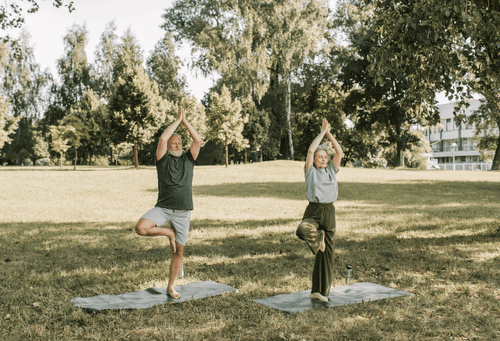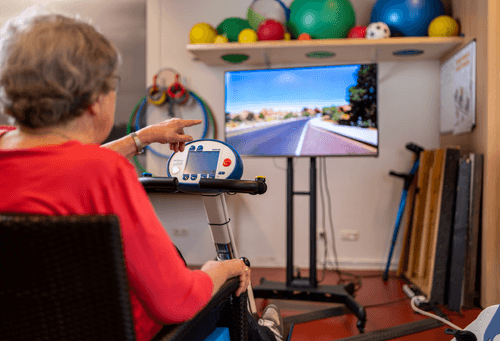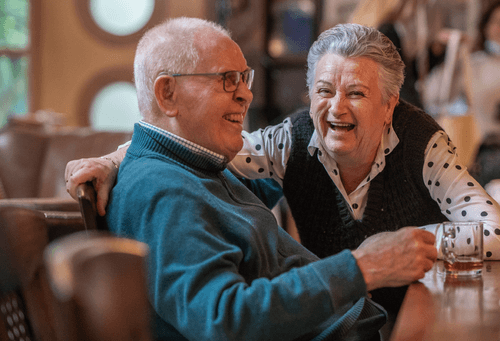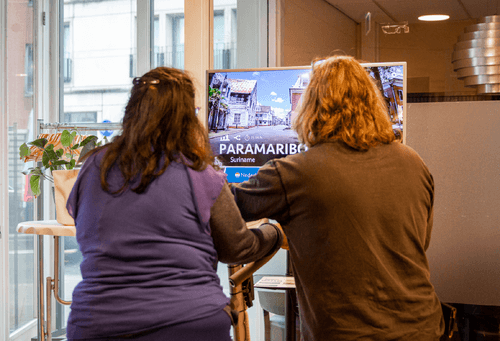Motivation and behavior change: how to approach it?
Everyone somewhere knows that we should eat healthy, avoid stress, get enough sleep, and exercise. Why is it still so difficult to learn new behavior and, more importantly, to stick to it? We explain it here based on the self-determination theory Deci & Ryan, Book: Intrinsic Motivation and Self-Determination in Human Behavior 1985, Deci & Ryan 1987.
Intrinsic motivation and extrinsic motivation
Intrinsic motivation is about a feeling that comes from deep within yourself. It doesn't have to immediately yield something, but is based on interest, curiosity, and/or the experience of joy and satisfaction through the activity itself. Even if you sometimes think you don't have intrinsic motivation, everyone has it; it's just a matter of pressing the right buttons to 'turn on' this system and strengthen it. The overall motivation in people, for example, to exercise is not one or the other, but often a combination of intrinsic and extrinsic factors that influence motivation and ultimately determine behavior (and whether you stick to your resolution). Behavior change based on intrinsic motivation has the advantage that, even if external motivating factors disappear, this form of motivation feeds itself and is therefore more enduring. Extrinsic factors to promote motivation ('I can eat that cake after exercising' or 'not exercising is bad for my health') are often easier to identify than the factors influencing intrinsic motivation.
Which factors influence your intrinsic motivation?
Factors that increase or undermine your intrinsic motivation, self-regulation, and well-being are personal and can vary widely between people, according to researchers [Tummers 2022, Ntoumanis 2020, Ryan & Deci 2000]. However, these factors are often linked to three innate psychological needs of people, according to the theory:
- The need to feel competent ('you can do it and make progress');
- The need for autonomy and self-determination ('I decide how and when I do this');
- The need for social connectedness with your fellow human beings; you are part of a larger whole.
When we meet these needs with our choices and behavior, we increase our own motivation and mental health. When we don't, our motivation and mental health decrease. This can apply to various areas, such as healthcare for clients, during sports, or in education, or when learning a new skill.
How does Bike Labyrinth fulfill these three psychological needs to increase motivation for movement?
The need to feel competent can be promoted in clients by allowing them, where possible, to do things themselves when choosing and cycling with Bike Labyrinth. For example, let them decide where they want to go that day, let them operate the buttons to choose a route, and decide when to start pedaling. Also, progressively choose routes of different durations and with no, few, or many decision points and stimuli ('I can do this').
The need for autonomy can be fulfilled by giving clients the opportunity to cycle with Bike Labyrinth themselves, where possible. In addition, Bike Labyrinth also supports the feeling of autonomy while cycling a route because the cyclist can decide where they want to go ('today I'll cycle past the bakery, or the market, or my former house'). Finally, the need for social connectedness can be fulfilled by cycling together with Bike Labyrinth and having conversations about what is visible on the screen. This can be done in a group with other residents to promote connections between them and find similarities between people or with care workers to confirm and strengthen the trust and relationship between care worker and client, or with family and friends visiting to reminisce about happy times shared or to discover new things together.






